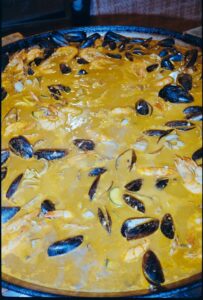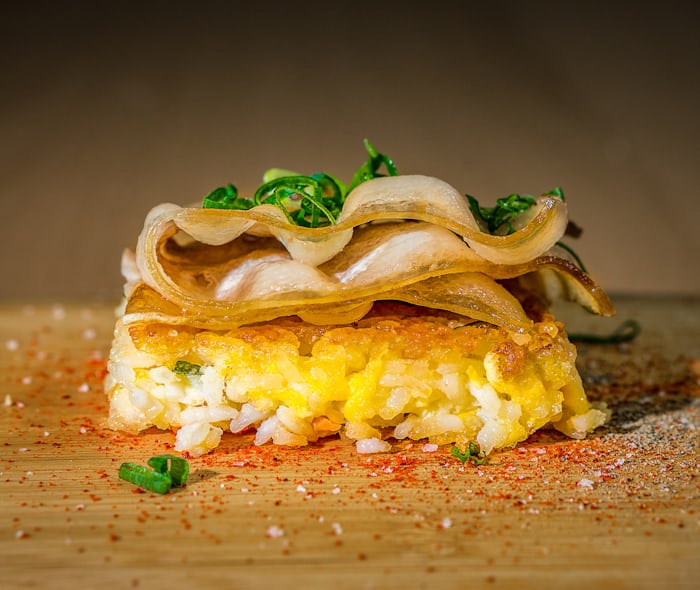Origins of Paella
Paella originated in the Valencian region of Spain. It began as a farmer’s meal, using local ingredients like rice, rabbit, chicken, and green beans.
The word “paella” comes from the Valencian name for the wide, shallow pan used to cook it.
Origin of Jambalaya
Jambalaya was born in Louisiana, USA. Influenced by African, French, and Spanish cuisines, it is believed to have evolved from Spanish attempts to recreate paella using tomatoes instead of saffron.
Over time, jambalaya became a defining dish of Cajun and Creole culture.
Ingredients: What’s Inside the Pot?
| Ingredient | Paella (Spain) | Jambalaya (Louisiana) |
|---|---|---|
| Rice | Short-grain (Bomba, Senia) | Long-grain white rice |
| Proteins | Chicken, rabbit, seafood | Chicken, sausage, shrimp, pork |
| Vegetables | Green beans, peas, bell peppers | Onion, bell pepper, celery, tomatoes |
| Seasonings | Saffron, paprika, garlic | Cajun or Creole spice blends |
| Broth | Light stock or water | Rich, tomato-based broth |
| Cooking Fat | Olive oil | Oil or butter |
Cooking Methods on Paella vs. Jambalaya

How Paella Is Cooked
Paella is cooked in a special wide pan called a paellera. Ingredients are layered over the rice, and it’s simmered until tender. The best paellas develop a crispy, caramelized bottom layer of rice called the socarrat.
How Jambalaya Is Cooked
Jambalaya is typically made in a deep pot or Dutch oven. The “holy trinity” of onion, bell pepper, and celery is sautéed, then meats, rice, and broth are added and simmered until everything is tender and flavorful.
Flavor Profiles
| Flavor Element | Paella | Jambalaya |
|---|---|---|
| Base Flavor | Earthy, saffron-infused | Spicy, smoky |
| Heat Level | Mild to moderate | Medium to hot |
| Texture | Tender rice with crispy bottom | Moist, stew-like |
| Serving Style | Served straight from the pan | Served in bowls or plates |
Cultural Significance
Why Paella Matters
In Spain, paella is a dish of pride and celebration. It’s served during festivals, family gatherings, and national holidays. Each region has its variation, but all consider paella a culinary treasure.
Jambalaya’s Cultural Role
Jambalaya tells the story of the American South. It embodies the blend of cultures in Louisiana and is a favorite at potlucks, tailgates, and community festivals like Mardi Gras.
Which Should You Choose?
If you are after delicate flavors with Mediterranean charm, choose paella. If you prefer bold spices and a comforting stew-like dish, go for jambalaya.
Either way, you are enjoying a rich, satisfying meal with deep cultural roots.

